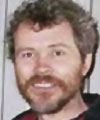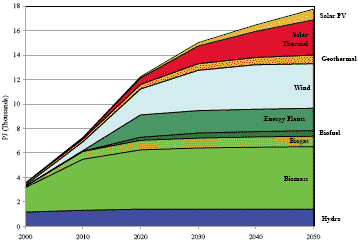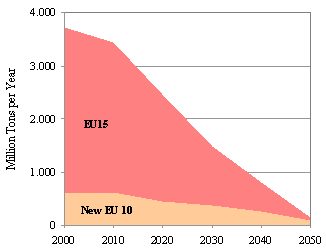Tiempo Climate Cyberlibrary
Global Sustainable Energy Vision 2050
- Tiempo archive
- Complete issues
- Selected articles
- Cartoons
- Climate treaty
- Latest news
- Secretariat
- National reports
- IPCC
About the Cyberlibrary
The Tiempo Climate Cyberlibrary was developed by Mick Kelly and Sarah Granich on behalf of the Stockholm Environment Institute and the International Institute for Environment and Development, with sponsorship from the Swedish International Development Cooperation Agency.
While every effort is made to ensure that information on this site, and on other sites that are referenced here, is accurate, no liability for loss or damage resulting from use of this information can be accepted.
 |
Gunnar Boye Olesen discusses a comprehensive series of visions, strategies and plans that demonstrate the transition to utilizing sustainable energy at the local, national, regional and global levels. |
| The author is co-coordinator of the International Network for Sustainable Energy. | |
It is crucial that the world's energy systems be made environmentally benign and sufficient to meet everybody's energy needs within a few decades. This is the best answer to the need to reduce climate change impacts to acceptable levels and to solve the global energy-supply crisis. We have better technologies than we have ever had which enable us to realize such a vision through increased energy efficiency and through the sustainable use of renewable energy.
Independent researchers have undertaken studies that allow for rapid carbon reductions based on the use of existing technologies for energy efficiency and renewable energy. Taking into account such studies, together with other proposals from the International Network for Sustainable Energy (InforSE) network, InforSE proposes a path which would supply the world with 100 per cent renewable energy by 2050, and accordingly, would give a 100 per cent reduction in energy-related carbon emissions.
The massive introduction of new, more efficient technologies will lead to huge reductions in costs as these technologies become mass-produced products. The investments necessary for the introduction of sustainable technologies will be repaid with the availability of cheaper technologies in the future.
There is, initially, an urgent need for large-scale shifts in energy investments towards the production of renewable-energy and energy-efficiency equipment, including local production of simple renewable-energy equipment in the developing countries.
A global shift towards a sustainable energy system is possible within a period of around fifty years. The changes made toward this system will have a number of beneficial effects. For example, the changes will result in a more stable energy supply and are compatible with global equity. In addition, marginal costs to society will be small, and may even be negative, if the changes are well-planned and phased in as part of the natural process of change of plants and equipment. These changes will require initial investments as well as long-term strategies. They will also require a major shift in energy supply systems along with optimization of energy-consuming equipment. All of this requires political will.
INforSE's Vision 2050 is based on a global renewable-energy scenario that would satisfy the energy demands of more than nine billion people with efficiently used renewable energy. For a number of European countries as well as for the European Union as a whole, INforSE and its network members have developed visions with detailed descriptions of possible future energy balances decade by decade until 2050.
A Vision for the European Union
INforSE's vision for the European Union includes a transition of energy supply and demand for the twenty-five European Union countries with a phase-out of fossil and nuclear energy over a fifty-year period.
| Nuclear power |
|---|
|
Nuclear power is marketed as clean, but it is not a sustainable form of energy. Pollution and contamination from uranium mining, along with safety problems, inherent problems of final waste transport and storage, and increased terrorism risks are just some of the problems that make nuclear power unsustainable. Further, the production of nuclear power does generate greenhouse gas emissions. Properly managed mining and processing of fuel results in carbon emissions comparable to those of the best gas-fired power stations. Nuclear fusion (hydrogen to helium) is also not sustainable. It will not produce any practical amounts of energy before 2050, making it too late for the transition. The technology also has problems with radioactivity and waste. The sustainable energy vision concludes that nuclear power be phased out as soon as practical possible; that no new nuclear power plants be built, and that the existing ones have no lifetime extensions. |
In line with the global vision, the European Vision is based on rapid growth of energy efficiency to reach an average level in 2050 similar to best available technologies today. Most energy-consuming equipment will be changed several times between now and 2050. If new generations of equipment are constructed for optimal energy performance, and if markets are compelled to promote the most efficient technology, it will not be a problem to reach the efficiency level of today's best available technology. Currently, that would yield efficiency gains of roughly four times. This is similar to an annual increase of efficiency of 3.3 per cent per year on average from 2010.
'Natural' technological development has managed efficiency increases of only about one per cent per year. Realizing this potentially very productive aspect of the vision will require greater attention, much greater political will, and concerted action from the stakeholders involved.
Sectoral examples
A majority of the houses to be heated in 2050 are probably already built, and thus the increase in energy efficiency cannot be expected to be as fast as for efficient equipment. For the fifteen 'old' European Union countries, the target heat consumption is 60 kWh/m2, on average. This will require about a 57 per cent reduction compared with the year 2000. This significant reduction is possible if energy-efficiency measures are included in adaptations and renovations, and if most new houses after 2015 are built as passive houses . The increase in efficiency is estimated to be two per cent per year from 2010, but only five per cent in total for 2000-2010. For the 'new' European Union countries, an increase in efficiency of 57 per cent is also expected for space heating, though with a higher level of specific heat demand.
For the transport sector, it is assumed that the conversion efficiency from fuel to transport-work is increased 2.5 times from the current 15-20 per cent in combustion-engine systems to 50 per cent in fuel cell systems. Electrically-driven vehicles have an even higher efficiency. It is assumed as well that the vehicles will be equipped with recoverage of break-energy, reducing 'end-use' of energy in transport to just the unavoidable friction losses in transport, except for aviation. Given these assumptions, total efficiency becomes about four times today's average. For rail and navigation, the vision assumes 'only' efficiency gains of 40 per cent and 25 per cent, respectively.
| Outlooks for Lithuania |
|---|
|
While the Lithuanian power company promotes new nuclear power, INforSE-Europe is developing a vision for a fossil- and nuclear-free Lithuania. Lithuania relies on gas imports, and the closure of the Ignalina nuclear power plant will increase this dependency. Lithuania has, though, increased its energy independence somewhat with a transition to biomass heating, in particular, in district heating. The new vision proposes that this development continue, with biomass-based combined heat and power plants for larger towns in Lithuania. To provide enough biomass, it is proposed that seven per cent of agricultural land be dedicated to energy plantations. The vision also includes levelling off of the current very strong increase in road transport with a concurrent strong growth in rail transport. Even with this reduced growth, however, by 2030, road transport will be 3.1 times that of year 2000 levels and freight car transport will be twice year 2000 levels. Other trends in the vision for Lithuania follow the vision for the European Union, including strong development of wind power through 2010-2020. The Lithuanian vision will result in a gradual reduction of fossil-fuel imports starting in 2010. Thus, 2020 imports will be reduced to 60 per cent of the 2000 level, while the carbon emissions are gradually reduced to zero by 2050. |
The growth of energy services, that is, of heated floor space, of transported goods and people and of energy-consuming production, is expected to plateau during the fifty-year period of the vision. This assumes that the average Western European has reached a sufficient level of material consumption to satisfy needs, and that material growth should ease out to leave environmental space for the poorer parts of the world. If such a change in consumer behaviour is to be realized, the growth of energy services need to be decoupled from economic growth.
Economists typically use a normal economic growth rate of 2.5 per cent for Western Europe. Given that assumption, the challenge for realization of Vision 2050 is almost to triple the economic value expressed as GDP compared with energy services. It is important that economic growth be used to increase energy efficiency, to reduce structural transport, to increase local production, and to increase the quality of products rather than quantity. For the transport sector, a modal shift from road to rail transport results in less road transport after 2030 than exists today in the fifteen 'old' European Union countries.
Renewable energy
Vision 2050 supports the European Union target of 12 per cent renewable energy use by 2010 as well as the target proposed by a large number of non-governmental organizations of 25 per cent renewable energy use by 2020. Vision 2050 projects shares of renewable energy of 40 percent by 2030 and more than 95 per cent by 2050. The renewable energy proposal is divided into proposals that address the individual renewable energy sources.
Strong development of wind power is projected, such that, by 2020 the European Union has accessible 220,000MW of wind power, compared with the 40,000MW at the beginning of 2006, and 340,000MW projected for 2030.
 |
Renewable energy growth following Vision2050 |
Solar energy use is expected to grow to 1.6m2/person by 2020 and to 8m2/person by 2050, with solar heating being the most important for the first decades and solar electricity, including photovoltaics, gradually taking over. This will require a strengthening of current development.
The use of solid biomass by the 'old' countries, apart from energy crops, is expected to grow to about 3,700PJ by 2010. This represents 90 per cent of the sustainable potential, a doubling from 2000. Current trends are well below that target; but are increasing. After 2010, it is expected than biomass use will grow to its sustainability limit - to about 5100PJ for the entire European Union. The full potential of biogas, that is, 850PJ, should be reached by 2020. Energy forest is projected to expand to cover seven per cent of present agricultural land by 2020.
Finally, other renewables, such as small hydro-power, geothermal energy and liquid biofuels, also play increasing roles in the energy mix.
 |
Phase-out of carbon emissions following Vision2050. The reduction in carbon emissions from energy use is expected to follow an 8 per cent reduction target for 2010, a 35 per cent reduction by 2020, 50 per cent by 2030 and greater than 95 per cent by 2050. |
The research that goes into INforSE visions, along with a number of other strategies and studies, clearly shows that with sufficient use of energy efficiency there will be no need to maintain unsustainable energy resources such as nuclear, coal or other fossil fuels. Similarly, there will be no need to develop polluting, unconventional fossil-fuel resources such as tar sands.
Nuclear energy is expected to be phased out as the current nuclear reactors are shut down because of age, safety problems and other untenable circumstances. This is expected to be complete by 2020. In regard to fossil fuels, expectations are for a gradual phase-out of coal use, a slow but increasing phase-out of oil use until 2050, and growing gas consumption until 2010, followed by a phase-out until 2050.
How fast can we change?
The introduction of renewable energy use can be extremely rapid as examples from a number of European countries show. For example, in Denmark, wind power provided less than four per cent of electricity supply in 1996 but this rapidly changed in the next four years to provide more than 12 per cent by 2000. In Germany, a country sixteen times larger than Denmark, wind power increased its share of electricity supply from one per cent in 1999 to about 4.5 per cent in 2005.
| A fast transition for Denmark |
|---|
|
Danish INforSE members favour a fast transition to sustainable energy, resulting in an almost full transition to renewable energy within 25 years, that is, by 2030. The energy-efficiency scenario includes the proposal made by the Danish construction sector of a twenty-year 50 per cent reduction in building-energy use. The renewable energy aspect combines a strong development of wind power, taking the trends from the vision for the European Union,together with a small share of electricity covered by wave-power by 2030. The vision also includes a transition to sustainable transport and development of a flexible energy system with storage capabilities for heat and electricity from 2020 onward. |
There are a number of other examples of fast increases in renewable-energy use, such as biomass electricity production in Sweden, which grew from 1.5 per cent to almost four per cent of electricity production between 1995 and 2003. Another example is the growth of geothermal electricity production in Iceland from six per cent to 17 per cent of electricity production during the period from 1990 to 1995. With successes such as these replicated in other countries and in other sectors, it is clear that the renewables part of Vision 2050 can be realized.
Increases in energy efficiency can be fast as well, although they tend to be less visible than renewable-energy successes. During the 1990s, white goods in Danish households increased in efficiency by 3 per cent per year. Improvements such as this will enable realization of the Vision's "factor four" increase in energy efficiency by 2050.
In short, there is good empirical evidence that the increases in energy efficiency and renewable energy needed for Vision 2050 are possible as is clearly indicated from the achievements already made in some sectors in a number of countries.
Acknowledgements
This article was first published in the December 2006 issue of Sustainable Energy News and is reproduced here with permission.
Further information
Gunnar Boye Olesen, International Network for Sustainable Energy (InforSE), Gl. Kirkevej 82, DK-8530 Hjortshoj, Denmark. Fax: +45-86-227096. Email: ove@inforse.org. Web: www.inforse.org.
On the Web
Full details of Vision 2050, the European Commission's proposed Energy Policy for Europe and the International Energy Agency's World Energy Outlook 2006 are available on-line.
Bright Ideas

General Electric plans to cut solar installation costs by half

Project 90 by 2030 supports South African school children and managers reduce their carbon footprint through its Club programme

Bath & North East Somerset Council in the United Kingdom has installed smart LED carriageway lighting that automatically adjusts to light and traffic levels

The United States National Oceanic and Atmospheric Administration and the American Public Gardens Association are mounting an educational exhibit at Longwood Gardens showing the link between temperature and planting zones

The energy-efficient Crowne Plaza Copenhagen Towers hotel is powered by renewable and sustainable sources, including integrated solar photovoltaics and guest-powered bicycles
El Hierro, one of the Canary Islands, plans to generate 80 per cent of its energy from renewable sources

The green roof on the Remarkables Primary School in New Zealand reduces stormwater runoff, provides insulation and doubles as an outdoor classroom

The Weather Info for All project aims to roll out up to five thousand automatic weather observation stations throughout Africa

SolSource turns its own waste heat into electricity or stores it in thermal fabrics, harnessing the sun's energy for cooking and electricity for low-income families

The Wave House uses vegetation for its architectural and environmental qualities, and especially in terms of thermal insulation

The Mbale compost-processing plant in Uganda produces cheaper fertilizer and reduces greenhouse gas emissions

At Casa Grande, Frito-Lay has reduced energy consumption by nearly a fifth since 2006 by, amongst other things, installing a heat recovery system to preheat cooking oil
Updated: May 15th 2015